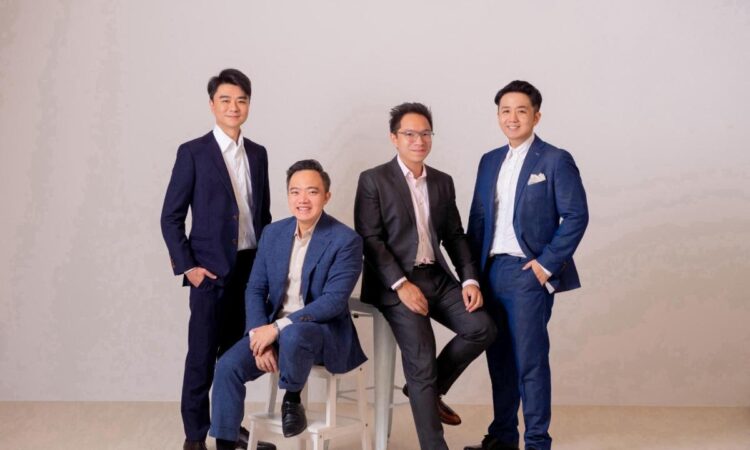
SINGAPORE, SINGAPORE / ACCESSWIRE / February 22, 2024 / Asia’s investment landscape is rapidly evolving, with high-net-worth individuals (HNWIs) actively seeking diverse opportunities. Optimism now reigns among these individuals, particularly in regions like China, Taiwan, Japan, and even countries outside Asia such as Australia, with expectations of compounding wealth.


Asian HNWIs lead globally in residential property investments, owning on average five homes each. They also continue to prioritize the real estate sector, with one in five planning direct investments into the property market amid economic uncertainties.
Additionally, sectors like healthcare and logistics are gaining traction among HNWIs, indicating a strategic shift towards diversified and resilient investment portfolios.
Rethinking Fund Management Strategies
HNWIs are progressively delving into a variety of investment vehicles, including hedge funds that have the potential for continuous innovation, improving upon its proven fund management model.
Alongside the growing demand for hedge funds, investors are seeking higher ROI. “Investor return expectations for a diversified hedge fund portfolio will also increase from the mid-single digits to 7-9% during a period of continued headwinds for the capital markets,” according to Seeking Alpha.
Traditional hedge fund models have historically revolved around strategies such as Commodity Trading Advisors (CTAs) and Market Neutral Long Short Equity. CTAs involve futures positions in commodities, currencies, and equity indexes with a substantial portion of capital held as collateral in short-term fixed income positions. On the other hand, Market Neutral Long Short Equity maintains a balance between long and short exposures, with the cash collateral tied to short-term fixed-income rates, excluding hard-to-borrow stocks.
“The current economic climate, characterized by high-interest rates and a moderate recession, prompts a redefinition of risk management. Investors and fund managers are recalibrating their approaches to assessing risk mitigation, prioritizing strategies that can adapt to higher volatility and changing market conditions,” says Elton Lim, Managing Director of Red Carp Fund.
This is evident in the significant market fluctuations during 2023. The CBOE Volatility Index (VIX), often referred to as the “fear gauge,” rose 38.8% from an index of 19.11 to 26.52, in response to the largest US bank failures since 2008. Additionally, the MOVE Index, which measures bond-market volatility, decreased from its peak of 180 down to 111 in 2023, according to Barrons.
These trends underline the growing importance of alpha generation through strategic fund management selection in increasingly unpredictable markets.
A notable trend is the concentration of net flows towards a small percentage of hedge fund managers with strong brands, according to a Seeking Alpha report. The competitive hedge fund landscape, with approximately 15,000 funds, has intensified the challenge for managers to attract and retain investors.
For Asia’s HNWIs in today’s investment landscape, grasping the complexities of various hedge fund models is imperative. Adapting to evolving economic conditions is crucial, not only for wealth generation but also for effective risk management.
Remodeling Risk and Profit Sharing
In the evolving hedge fund landscape, various models are emerging, offering unique benefits to HNWIs. These include co-investment models, where fund managers invest alongside clients, enhancing trust and the stronger alignment of interests. Risk-sharing models are also emerging, where losses and gains are more equitably distributed between managers and investors.
A novel approach is encapsulated with a first-loss fund model, which realigns the conventional dynamics between fund managers and investors. The model diverges from traditional structures where investors unproportionately bear the majority of losses. In contrast, fund managers in the first-loss model absorb a significant portion of initial losses, directly aligning the interests with its investors. And for HNWIs, this means a more balanced risk-sharing scenario.
“Traditionally, when the fund manager makes money on the trades, they get a share of the profits. When they lose, the clients bear it all. By adopting a first-loss fund model, the dynamics between fund managers and investors can be reshaped, fostering a culture of transparency and shared success,” says Peter Zhang, Special Adviser of Red Carp Fund.
This alignment is particularly relevant considering past challenges in traditional investment structures, where the disparity in risk and reward between investors and fund managers often led to misaligned incentives.
Approaches such as the first-loss model enhance investor confidence by distributing more initial downside risk to the fund managers, while simultaneously capturing the complete upside reward for HNWIs. Hedge funds such as Red Carp, which specializes in global foreign currency markets, adopt this particular model. The fund’s low correlation to traditional asset classes such as equity, fixed income, or real estate markets, reflects its diversified and well-balanced strategy.
Tomorrow’s Wealth Waves
Emerging trends such as co-investment and risk-sharing models are reshaping dynamics between fund managers and investors. This shift addresses historical challenges in traditional investment structures, mitigating the gap in risk and reward that often led to misaligned incentives between HNWIs and fund managers.
Looking ahead, the investment strategies of HNWIs in Asia-Pacific are adapting to a complex financial environment and significant wealth transitions.
Media Details
Contact Person: Peter Zhang
Company Name: Red Carp Fund
Business Mail: peterzhang@redcarpfund.com
City & Country: Singapore, Singapore
Website: https://redcarpfund.com
SOURCE: Red Carp Fund
View the original press release on accesswire.com
